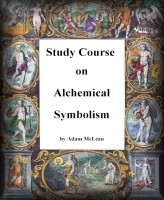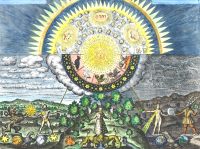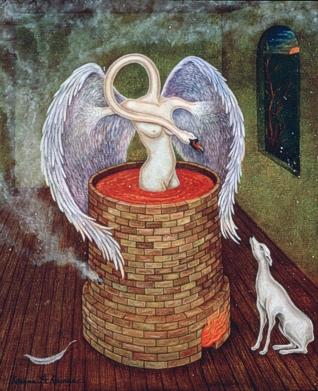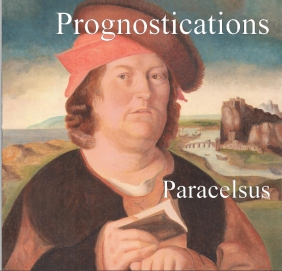|
|
Alchemy as metaphysicsBack to introduction.In the 20th century, physics made very significant strides in uncovering the inner nature of the material world. Some of these developments involved the use of abstract mathematical systems which led physics somewhat away from peoples common-sense preconceptions about the nature of things. Relativity theory forced upon us new paradoxical ideas on the nature of time, radioactivity made us aware that matter is not necessarily stable, and the quantum theory with its sea of probabilities, in which an electron is simultaneously a wave and a particle, seemed rather far removed from the comfort of the absolute 'Newtonian' physics, or that promoted by Lord Kelvin, that prevailed during the 19th century. However, all was still well, for relativistic calculations were needed to analyse the nature of distant galaxies or to get the Apollo spacecraft to the Moon, quantum theory was needed to devise lasers, and radioactivity produced enormous amounts of controlled or destructive energy, albeit at a terrifying environmental cost. We could put up with the metaphysical difficulties of fundamental physics, if it made life easy for us. Experiments could be done to show that these theories, which fundamentally challenged our intuition, nevertheless predicted the real properties of objects in the world. The onward progress of fundamental physics seemed to take a new turn in the 1970's, with the need for a theory to unite the four fundamental forces of nature within one common mathematical structure. Various things were tried - Super-symmetry, Kaluza-Klein theories, String theory, the idea that a particle was actually composed of some formation of 7th-dimensional manifolds folded up and embedded in a higher dimensional space. The topology of these structures was entirely impenetrable by our ordinary intuitive conception of the nature of space. Physics then passed across a threshold into metaphysics. For there can be no experiments conceivable to test these theories. The energies required are just too high. Human beings just cannot harness enough energy to perform the quantum gravity experiments that need to be done. The present generation of particle accelerators are thousands of millions of times less powerful than the energies required to test the theories of quantum gravity which unite the four fundamental forces. So how do physicists cope with this great gulf? Do they abandon their work in despair? No, they resort to metaphysical criteria. They judge a theory by its beauty, its mathematical purity, the way in which it neatly fixes a problem within an earlier generation of the theory. They extend abstract mathematical ideas, group theory, topology, knot theory, differential geometry and judge how neatly each maps onto the properties of matter, the laws of physics. They use their intuition, their gut-feeling, as to whether it is worth pursuing or abandoning one line of enquiry against another. This is not so far removed from the way in which the alchemists of the 15th, 16th, 17th, and 18th centuries conducted their metaphysical investigations. Earlier alchemists held that the four elements were the primal structure of substance - later the new theory of the three principles became the norm. Alchemists judged theories by their beauty, their neatness, their simplicity, by the fact that they felt right. This doesn't seem much different from the way in which those at the leading edge of fundamental physics conduct themselves. Also, in the absence of usable results, fundamental physicists, just like the alchemists of centuries ago, have to try and convince their masters, the politicians that hold the purse strings, that their research will lead to great advances to society. Seen with the perspective of history, the physicists of today will be indistinguishable from the alchemists.They are wrapped up in metaphysics, and have no experimental way forward. In the 17th and 18th centuries, the rise of the power of the experimental method, enunciated by Bacon, and put into action by Boyle and his successors, gradually eroded alchemy. The scientific method of repeatable testing through experiment could get technological results, make machines, measure the universe, and produce energy to make life more comfortable. The beauty of the metaphysics retreated, in the rush for new inventions. But this beauty has now returned. If it is acceptable to study the metaphysical speculative methods of contemporary physicists, then there can be no philosophical grounds for rejecting the methodology of the hermetic metaphysicians, the alchemists. In this sense, present day physics validates alchemy.
|
Introduction Reading list Some quotations Frequently asked questions Common misconceptions Timeline The different ways of looking at alchemy -------
Proto-chemistrySymbolism Psychology allegorical journeys mysticism metaphysical historians of ideas  Study Courses
Study Courses Alchemical, astrological and emblematic art prints  Alchemy and art  Art books Series  Study course on Bosch's Garden of Earthly Delights New Hieronymus Bosch Website |